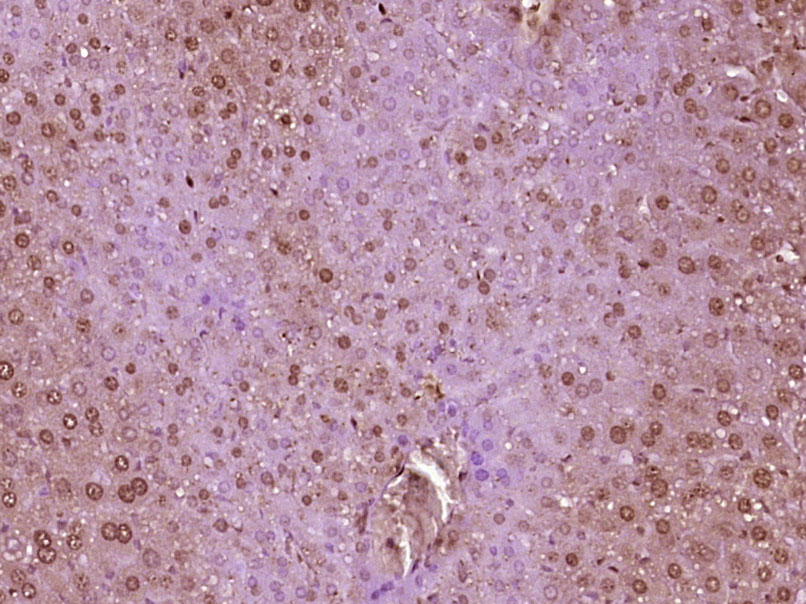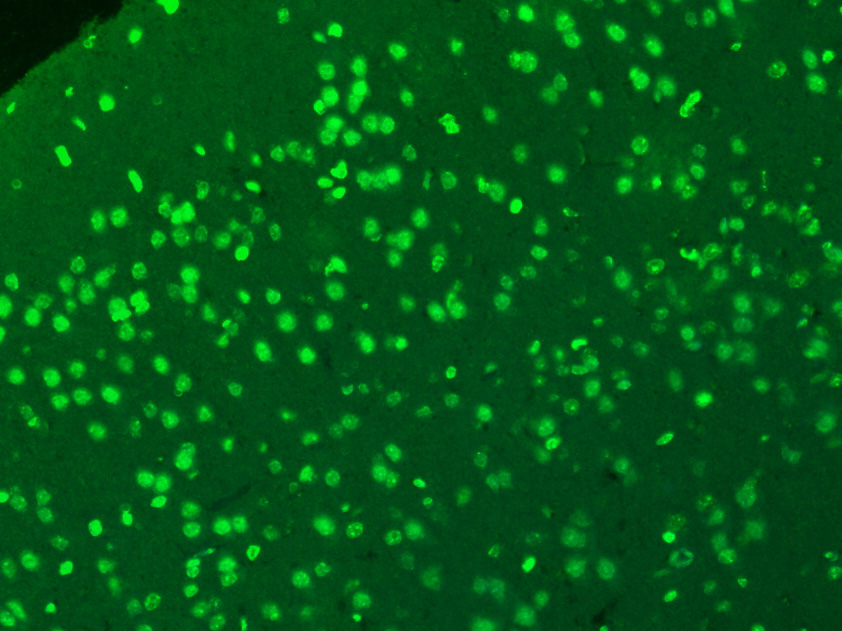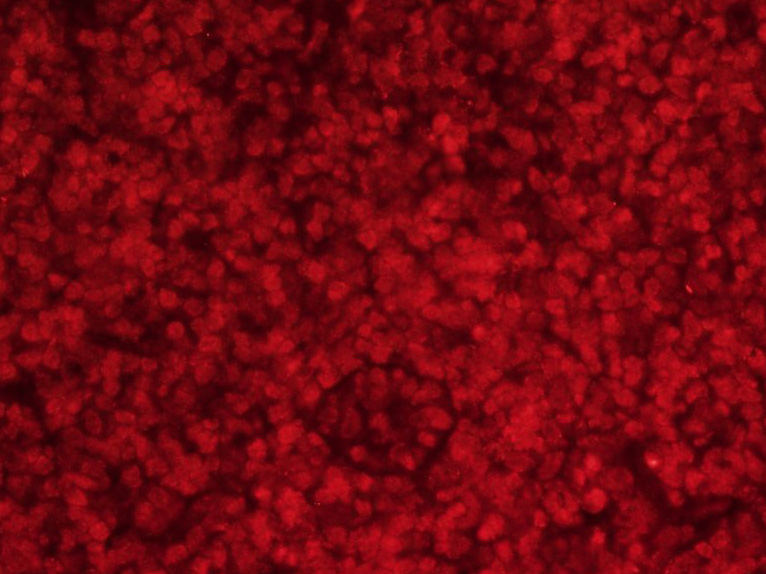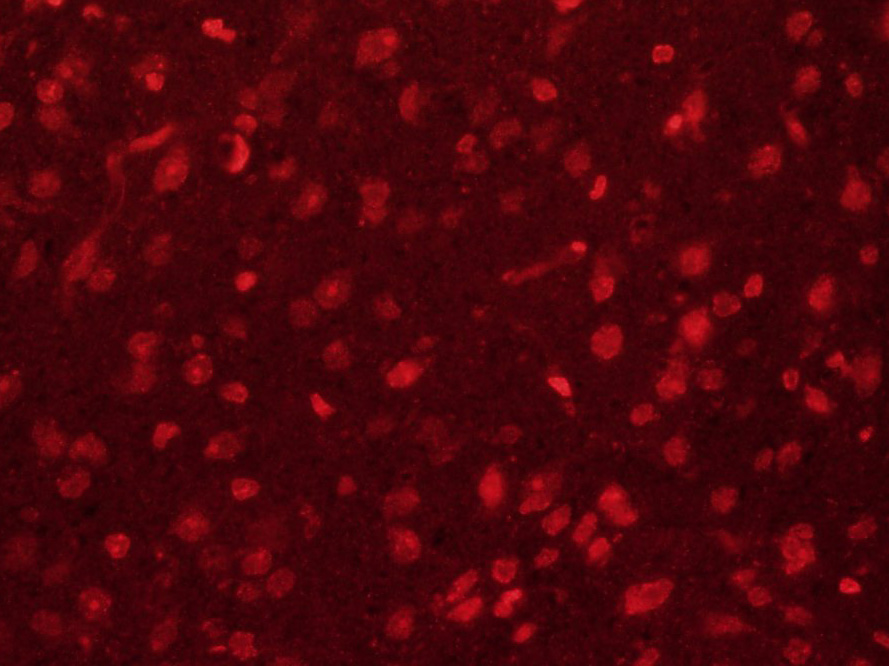
Rabbit Anti-SIP1 antibody
Smad Interacting Protein 1 SIP 1; SIP1 SIP-1; Smad-interacting protein 1; SMADIP 1; SMADIP1; ZEB 2; ZEB2; ZEB2_HUMAN; Zfhx1b; ZFHX1B protein; Zfx1b; Zinc finger E box binding protein 2; Zinc finger E-box-binding homeobox 2; Zinc finger homeobox 1b; zinc f
View History [Clear]
Details
Product Name SIP1 Chinese Name Smad蛋白相互作用蛋白1抗体 Alias Smad Interacting Protein 1 SIP 1; SIP1 SIP-1; Smad-interacting protein 1; SMADIP 1; SMADIP1; ZEB 2; ZEB2; ZEB2_HUMAN; Zfhx1b; ZFHX1B protein; Zfx1b; Zinc finger E box binding protein 2; Zinc finger E-box-binding homeobox 2; Zinc finger homeobox 1b; zinc finger homeobox protein 1; Zinc finger homeobox protein 1b. Research Area Cardiovascular Cell biology Developmental biology Neurobiology Stem cells Cyclin transcriptional regulatory factor Epigenetics Immunogen Species Rabbit Clonality Polyclonal React Species Mouse, Rat, (predicted: Human, Chicken, Dog, Horse, ) Applications ELISA=1:5000-10000 IHC-P=1:100-500 IHC-F=1:100-500 IF=1:100-500 (Paraffin sections need antigen repair)
not yet tested in other applications.
optimal dilutions/concentrations should be determined by the end user.Theoretical molecular weight 136kDa Cellular localization The nucleus Form Liquid Concentration 1mg/ml immunogen KLH conjugated synthetic peptide derived from human SIP1: 951-1100/1214 Lsotype IgG Purification affinity purified by Protein A Buffer Solution 0.01M TBS(pH7.4) with 1% BSA, 0.03% Proclin300 and 50% Glycerol. Storage Shipped at 4℃. Store at -20 °C for one year. Avoid repeated freeze/thaw cycles. Attention This product as supplied is intended for research use only, not for use in human, therapeutic or diagnostic applications. PubMed PubMed Product Detail SMAD regulates gene expression by interacting with different classes of transcription factors including DNA-binding multi-zinc finger proteins. SIP1, for SMAD interacting protein 1, is a member of the delta-EF1/Zfh1 family of 2-handed zinc finger/homeodomain proteins. SIP1 contains a SMAD-binding domain, a homeodomain and two clusters of zinc fingers on the N- and C-termini. SIP1, also known as SMADIP1, ZFHX1B and ZEB2 (zinc finger E-box-binding protein 2), can be induced by TGF∫ treatment. SIP1 plays a crucial role in normal embryonic development of neural structures and the neural crest. The human SIP1 gene maps to chromosome 2q22. Mutations in the SIP1 gene cause a form of Hirschsprung disease (HSCR). Patients with SIP1 mutations show mental retardation, delayed motor development, epilepsy, microcephaly, distinct facial features and/or congenital heart disease—all symptoms of HSCR.
Function:
Transcriptional inhibitor that binds to DNA sequence 5'-CACCT-3' in different promoters. Represses transcription of E-cadherin.
Subunit:
Binds activated SMAD1, activated SMAD2 and activated SMAD3; binding with SMAD4 is not detected (By similarity). Interacts with CBX4 and CTBP1.
Subcellular Location:
Nucleus.
Post-translational modifications:
Sumoylation on Lys-391 and Lys-866 is promoted by the E3 SUMO-protein ligase CBX4, and impairs interaction with CTBP1 and transcription repression activity.
DISEASE:
Defects in ZEB2 are the cause of Mowat-Wilson syndrome (MWIS) [MIM:235730]; also known as Hirschsprung disease-mental retardation syndrome. A complex developmental disorder characterized by mental retardation, delayed motor development, epilepsy, microcephaly and a wide spectrum of clinically heterogeneous features suggestive of neurocristopathies at the cephalic, cardiac, and vagal levels. Some patients manifest Hirschsprung disease. Affected patients show an easily recognizable facial appearance with deep set eyes and hypertelorism, medially divergent, broad eyebrows, prominent columella, pointed chin and uplifted, notched ear lobes.
Similarity:
Belongs to the delta-EF1/ZFH-1 C2H2-type zinc-finger family.
Contains 7 C2H2-type zinc fingers.
Contains 1 homeobox DNA-binding domain.
SWISS:
O60315
Gene ID:
9839
Database links:
Entrez Gene: 9839 Human
Entrez Gene: 24136 Mouse
Omim: 605802 Human
SwissProt: O60315 Human
SwissProt: Q9R0G7 Mouse
Unigene: 34871 Human
Unigene: 440702 Mouse
Unigene: 59710 Rat
Product Picture
References (0)
No References
Bought notes(bought amounts latest0)
No one bought this product
User Comment(Total0User Comment Num)
- No comment






 +86 571 56623320
+86 571 56623320
 +86 18668110335
+86 18668110335

